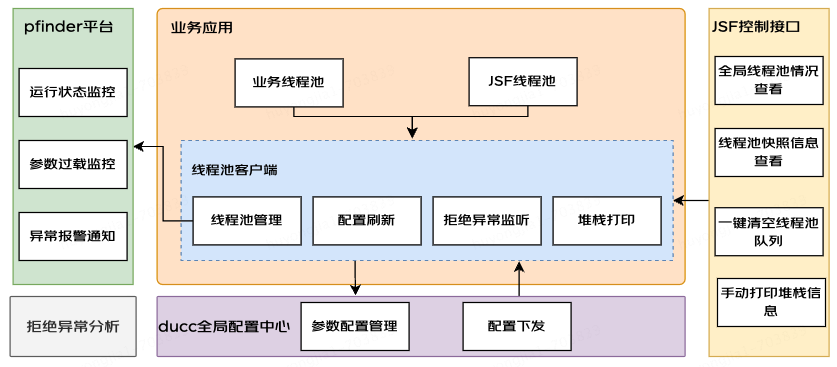01
vhost-user
DPDK的提出以及设计思想
随着各种互联网应用的不断出现,网络设备以及服务器的带宽也快速提升,从千兆到万兆再到25G,40G,100G快速演变。
与此同时,在云计算和系统虚拟化技术的快速发展的推动下,虚拟机的网络处理能力需求也逐年增强。
另外,不仅是在服务器领域,很多网络服务也都逐渐向虚拟化,资源池化,云化的方向发展,比如路由器,交换机,防火墙,基站等常用网络设备原本都是硬件解决方案,现在也逐渐向虚拟化方向发展,业界急需适合高性能网络的软件解决方案。
既往的基于Linux实现的网络服务是基于内核的,也就是说所有数据包的发送和接收都要经过内核协议栈。在处理大流量和高并发的情况下,频繁的硬件中断会降低内核数据包的处理能力,同时内核空间和用户空间之间的数据拷贝也会产生比较大的负载。
为了进一步提升网络数据处理能力,Linux UIO (user-space drivers)技术把硬件操作映射到用户空间,实现了在用户空间直接操作网卡硬件。
这样网络数据包的处理就可以不经过Linux内核了,避免了高速网络数据处理时内核中断爆炸和大量数据复制的问题,进而让网络处理能力得以大幅度的提升。
绕过内核直接在用户态处理网络数据包,不仅可以解决内核的性能瓶颈,而且还易于开发和维护,和基于内核模块的实现相比也更灵活。
另外,因为程序运行在用户空间,即使有问题也不影响Linux内核和系统的其他模块,也增强了整个系统的可用性。
针对高性能网络软件开发框架的需求,基于Linux UIO技术在应用层处理网络数据包,这也正是IntelDPDK的主要设计思想。
DPDK应用初识

图1Linux内核处理路径(慢路径)和DPDK处理路径(快路径)对比
如图1所表示的就是基于Linux内核的数据处理路径(慢路径)和基于DPDK的用户空间数据处理路径(快路径)的对比。
这里需要特别说明的是,Intel DPDK被编译之后其实是一系列的库文件,供应用程序调用和链接。基于DPDK机制开发的应用程序在编译和链接DPDK的库文件之后,就可以进行高速的网络处理了。
这些DPDK应用都是运行在用户空间的应用程序。通过Linux UIO的机制以及少量内核模块(例如Intel x86平台上需要预先加载igb_uio等内核驱动模块),这些运行在用户空间的DPDK应用程序能够旁路Linux内核,直接操作物理网卡进而完成高速网络数据的发送和接收。
截止到目前为止DPDK已经支持多种硬件体系结构,包括Intel x86,ARM,PowerPC等等,并且被网络设备厂商和互联网厂商广泛接受,已经有很多基于DPDK开发的产品和服务投入到生产环境使用了。
IntelDPDK的核心技术之一是PMD (用户态的轮询模式驱动)。通过非中断以及数据进出应用缓冲区内存的零拷贝机制,进一步提高发送接受数据的效率。用户态模式的PMD驱动,去除中断,避免内核态和用户态内存拷贝,减少系统开销,从而提升I/O吞吐能力。
我们可以通过分析DPDK中的L2fw程序,大致了解一下DPDK应用程序的基本结构。
具体的代码可以参考dpdk-stable-18.11.11/examples/l2fwd/main.c。l2fwd是一个简单的DPDK应用程序,可以看出在main函数中,调用rte_eal_init函数对DPDK运行环境进行初始化之后,调用l2fwd_launch_one_lcore函数在每个CPU的核上都运行l2fwd_main_loop函数。
l2fwd_main_loop函数就是在无限循环中不断的轮询该CPU核绑定的网卡的所有端口,调用rte_eth_tx_buffer_flush和rte_eth_rx_burst进行数据包的发送和接收,进而再完成转发。
被DPDK应用绑定的CPU核不再被Linux内核调度,而是被l2fwd_main_loop函数独占。所以和原来基于Linux内核的实现相比,网络数据包的处理能力得以大幅度提升。 DPDK中的PMD技术的具体实现,可以参考dpdk-stable-18.11.11/drivers/net/e1000/igb_ethdev.c中的函数eth_igb_dev_init,PMD相关的实现是DPDK的内部实现,限于篇幅,我们这里就不展开讲解了。
|
int main(intargc,char**argv) { …… /*initEAL*/ ret=rte_eal_init(argc,argv); if(ret< 0) …… /*launchper-lcoreinitoneverylcore*/ rte_eal_mp_remote_launch(l2fwd_launch_one_lcore,NULL,CALL_MASTER); …… } |
|
staticint l2fwd_launch_one_lcore(__attribute__((unused))void*dummy) { l2fwd_main_loop(); return0; } |
|
/*mainprocessingloop*/ staticvoid l2fwd_main_loop(void) { structrte_mbuf*pkts_burst[MAX_PKT_BURST]; structrte_mbuf*m; intsent; unsignedlcore_id; uint64_tprev_tsc,diff_tsc,cur_tsc,timer_tsc; unsignedi,j,portid,nb_rx; structlcore_queue_conf*qconf; constuint64_tdrain_tsc=(rte_get_tsc_hz()+US_PER_S-1)/US_PER_S* BURST_TX_DRAIN_US; structrte_eth_dev_tx_buffer*buffer; prev_tsc=0; timer_tsc=0; lcore_id=rte_lcore_id(); qconf=&lcore_queue_conf[lcore_id]; if(qconf->n_rx_port==0){ RTE_LOG(INFO,L2FWD,"lcore%uhasnothingtodo ",lcore_id); return; } RTE_LOG(INFO,L2FWD,"enteringmainlooponlcore%u ",lcore_id); for(i=0;i< qconf->n_rx_port;i++){ portid=qconf->rx_port_list[i]; RTE_LOG(INFO,L2FWD,"--lcoreid=%uportid=%u ",lcore_id, portid); } while(!force_quit){ cur_tsc=rte_rdtsc(); /* *TXburstqueuedrain */ diff_tsc=cur_tsc-prev_tsc; if(unlikely(diff_tsc>drain_tsc)){ for(i=0;i< qconf->n_rx_port;i++){ portid=l2fwd_dst_ports[qconf->rx_port_list[i]]; buffer=tx_buffer[portid]; sent=rte_eth_tx_buffer_flush(portid,0,buffer); if(sent) port_statistics[portid].tx+=sent; } /*iftimerisenabled*/ if(timer_period>0){ /*advancethetimer*/ timer_tsc+=diff_tsc; /*iftimerhasreacheditstimeout*/ if(unlikely(timer_tsc>=timer_period)){ /*dothisonlyonmastercore*/ if(lcore_id==rte_get_master_lcore()){ print_stats(); /*resetthetimer*/ timer_tsc=0; } } } prev_tsc=cur_tsc; } /* *ReadpacketfromRXqueues */ for(i=0;i< qconf->n_rx_port;i++){ portid=qconf->rx_port_list[i]; nb_rx=rte_eth_rx_burst(portid,0, pkts_burst,MAX_PKT_BURST); port_statistics[portid].rx+=nb_rx; for(j=0;j< nb_rx; j++) { m=pkts_burst[j]; rte_prefetch0(rte_pktmbuf_mtod(m,void*)); l2fwd_simple_forward(m,portid); } } } } |
vhost-user与DPDK
在对DPDK应用程序有了一个基本认识,并理解了基本原理和核心技术的基础上,下面我们进入到DPDK场景下用户态的virtio-net的实现,也就是vhost-user的相关介绍。
DPDK场景下,virtio-net后端和virtio-net前端的关系图,其中涉及到OVS-DPDK,QEMU,Linux内核和物理网卡硬件。我们接下来会先讲一下各个模块之间的关系,以及它们和virtio-net前端和后端的关系。
-OVS-DPDK:实现了三部分功能。1). 用户空间的PMD,不断地和物理网卡通信,发送接收数据包;2). 虚拟交换机的功能,这部分和我们平时熟悉的OVS是一样的;3). DPDK场景下的virtio-net后端的实现,和virtio-net前端通信。
-QEMU:是一个运行在用户空间的多线程程序,有运行虚拟机的vCPU线程,有处理中断的KVM线程和eventfd。不同之处在于:在DPDK场景下,virtio-net前端是运行在虚拟机线程内的DPDK应用程序。这时,虚拟机的网络接口的类型是vhost-user,它会基于UNIX domain socket和virtio-net后端(实现在OVS-DPDK中)通信。
可以看出,在DPDK场景下,virtio-net前端和后端的实现都在DPDK代码中。
在运行态的时候,就像图2所显示的那样,virtio-net前端是QEMU虚拟机内运行的DPDK应用程序,virtio-net后端运行在OVS-DPDK中。
两者都运行在用户态,通过UNIX domain socket进行通信。vhost-user是将virtio-net驱动在用户态的实现。
下面我们结合结合DPDK 18.11的代码,针对virtio设备的初始化,发送数据的处理流程,做进一步的分析和讲解。
设备发现和初始化
在QEMU虚拟机中运行DPDK应用时:virtio-net前端的初始化的具体实现是在dpdk-stable-18.11.11/drivers/net/virtio/virtio_ethdev.c文件中,其中rte_virtio_pmd是驱动的主要数据结构。
QEMU中的虚拟机运行DPDK应用程序的时候,在指定vhost-user端口的时候,会注册rte_virtio_pmd驱动程序。驱动中的probe函数注册为eth_virtio_pci_probe函数。DPDK驱动程序这样的写法和Linux内核中的PCI网络驱动是一样的,比较容易理解。
函数eth_virtio_dev_init会调用virtio_init_device函数,其中可以看到我们之前介绍过的复合virtio规范的协商特性位(feature bits),配置MTU等网卡相关的配置,调用virtio_alloc_queues配置虚拟队列等操作。
|
staticstructrte_pci_driverrte_virtio_pmd={ .driver={ .name="net_virtio", }, .id_table=pci_id_virtio_map, .drv_flags=0, .probe=eth_virtio_pci_probe, .remove=eth_virtio_pci_remove, }; RTE_INIT(rte_virtio_pmd_init) { rte_eal_iopl_init(); rte_pci_register(&rte_virtio_pmd); } |
|
staticinteth_virtio_pci_probe(structrte_pci_driver*pci_drv__rte_unused, structrte_pci_device*pci_dev) { if(rte_eal_iopl_init()!=0){ PMD_INIT_LOG(ERR,"IOPLcallfailed-cannotusevirtioPMD"); return1; } /*virtiopmdskipsprobeifdeviceneedstoworkinvdpamode*/ if(vdpa_mode_selected(pci_dev->device.devargs)) return1; returnrte_eth_dev_pci_generic_probe(pci_dev,sizeof(structvirtio_hw),eth_virtio_dev_init); } |
|
/*resetdeviceandrenegotiatefeaturesifneeded*/ staticint virtio_init_device(structrte_eth_dev*eth_dev,uint64_treq_features) { structvirtio_hw*hw=eth_dev->data->dev_private; structvirtio_net_config*config; structvirtio_net_configlocal_config; structrte_pci_device*pci_dev=NULL; intret; /*Resetthedevicealthoughnotnecessaryatstartup*/ vtpci_reset(hw); if(hw->vqs){ virtio_dev_free_mbufs(eth_dev); virtio_free_queues(hw); } /*Tellthehostwe'venoticedthisdevice.*/ vtpci_set_status(hw,VIRTIO_CONFIG_STATUS_ACK); /*Tellthehostwe'veknownhowtodrivethedevice.*/ vtpci_set_status(hw,VIRTIO_CONFIG_STATUS_DRIVER); if(virtio_negotiate_features(hw,req_features)< 0) return-1; if(!hw->virtio_user_dev){ pci_dev=RTE_ETH_DEV_TO_PCI(eth_dev); rte_eth_copy_pci_info(eth_dev,pci_dev); } /*IfhostdoesnotsupportbothstatusandMSI-XthendisableLSC*/ if(vtpci_with_feature(hw,VIRTIO_NET_F_STATUS)&& hw->use_msix!=VIRTIO_MSIX_NONE) eth_dev->data->dev_flags|=RTE_ETH_DEV_INTR_LSC; else eth_dev->data->dev_flags&=~RTE_ETH_DEV_INTR_LSC; /*Settinguprx_headersizeforthedevice*/ if(vtpci_with_feature(hw,VIRTIO_NET_F_MRG_RXBUF)|| vtpci_with_feature(hw,VIRTIO_F_VERSION_1)) hw->vtnet_hdr_size=sizeof(structvirtio_net_hdr_mrg_rxbuf); else hw->vtnet_hdr_size=sizeof(structvirtio_net_hdr); /*CopythepermanentMACaddressto:virtio_hw*/ virtio_get_hwaddr(hw); ether_addr_copy((structether_addr*)hw->mac_addr, ð_dev->data->mac_addrs[0]); PMD_INIT_LOG(DEBUG, "PORTMAC:%02X:%02X:%02X:%02X:%02X:%02X", hw->mac_addr[0],hw->mac_addr[1],hw->mac_addr[2], hw->mac_addr[3],hw->mac_addr[4],hw->mac_addr[5]); if(vtpci_with_feature(hw,VIRTIO_NET_F_CTRL_VQ)){ config=&local_config; vtpci_read_dev_config(hw, offsetof(structvirtio_net_config,mac), &config->mac,sizeof(config->mac)); if(vtpci_with_feature(hw,VIRTIO_NET_F_STATUS)){ vtpci_read_dev_config(hw, offsetof(structvirtio_net_config,status), &config->status,sizeof(config->status)); }else{ PMD_INIT_LOG(DEBUG, "VIRTIO_NET_F_STATUSisnotsupported"); config->status=0; } if(vtpci_with_feature(hw,VIRTIO_NET_F_MQ)){ vtpci_read_dev_config(hw, offsetof(structvirtio_net_config,max_virtqueue_pairs), &config->max_virtqueue_pairs, sizeof(config->max_virtqueue_pairs)); }else{ PMD_INIT_LOG(DEBUG, "VIRTIO_NET_F_MQisnotsupported"); config->max_virtqueue_pairs=1; } hw->max_queue_pairs=config->max_virtqueue_pairs; if(vtpci_with_feature(hw,VIRTIO_NET_F_MTU)){ vtpci_read_dev_config(hw, offsetof(structvirtio_net_config,mtu), &config->mtu, sizeof(config->mtu)); /* *MTUvaluehasalreadybeencheckedatnegotiation *time,butcheckagainincaseithaschangedsince *then,whichshouldnothappen. */ if(config->mtu< ETHER_MIN_MTU) { PMD_INIT_LOG(ERR,"invalidmaxMTUvalue(%u)", config->mtu); return-1; } hw->max_mtu=config->mtu; /*SetinitialMTUtomaximumonesupportedbyvhost*/ eth_dev->data->mtu=config->mtu; }else{ hw->max_mtu=VIRTIO_MAX_RX_PKTLEN-ETHER_HDR_LEN- VLAN_TAG_LEN-hw->vtnet_hdr_size; } PMD_INIT_LOG(DEBUG,"config->max_virtqueue_pairs=%d", config->max_virtqueue_pairs); PMD_INIT_LOG(DEBUG,"config->status=%d",config->status); PMD_INIT_LOG(DEBUG, "PORTMAC:%02X:%02X:%02X:%02X:%02X:%02X", config->mac[0],config->mac[1], config->mac[2],config->mac[3], config->mac[4],config->mac[5]); }else{ PMD_INIT_LOG(DEBUG,"config->max_virtqueue_pairs=1"); hw->max_queue_pairs=1; hw->max_mtu=VIRTIO_MAX_RX_PKTLEN-ETHER_HDR_LEN- VLAN_TAG_LEN-hw->vtnet_hdr_size; } ret=virtio_alloc_queues(eth_dev); if(ret< 0) returnret; if(eth_dev->data->dev_conf.intr_conf.rxq){ if(virtio_configure_intr(eth_dev)< 0) { PMD_INIT_LOG(ERR,"failedtoconfigureinterrupt"); virtio_free_queues(hw); return-1; } } vtpci_reinit_complete(hw); if(pci_dev) PMD_INIT_LOG(DEBUG,"port%dvendorID=0x%xdeviceID=0x%x", eth_dev->data->port_id,pci_dev->id.vendor_id, pci_dev->id.device_id); return0; } |
在OVS-DPDK中添加一个vhost-user网络接口时:OVS-DPDK会调用rte_vhost_driver_register函数,首先根据传入参数path文件路径创建UNIX domain socket,用于后续virtio-net前端(QEMU虚拟机中的DPDK应用程序)和virtio-net后端(OVS-DPDK应用程序)的通信。
这部分相关的源码在dpdk-stable-18.11.11/lib/librte_vhost/socket.c的第824行,主要的函数是rte_vhost_driver_register。
|
/* *Registeranewvhost-usersocket;herewecouldactasserver *(thedefaultcase),orclient(whenRTE_VHOST_USER_CLIENT)flag *isset. */ int rte_vhost_driver_register(constchar*path,uint64_tflags) { intret=-1; structvhost_user_socket*vsocket; if(!path) return-1; pthread_mutex_lock(&vhost_user.mutex); if(vhost_user.vsocket_cnt==MAX_VHOST_SOCKET){ RTE_LOG(ERR,VHOST_CONFIG, "error:thenumberofvhostsocketsreachesmaximum "); gotoout; } vsocket=malloc(sizeof(structvhost_user_socket)); if(!vsocket) gotoout; memset(vsocket,0,sizeof(structvhost_user_socket)); vsocket->path=strdup(path); if(vsocket->path==NULL){ RTE_LOG(ERR,VHOST_CONFIG, "error:failedtocopysocketpathstring "); vhost_user_socket_mem_free(vsocket); gotoout; } TAILQ_INIT(&vsocket->conn_list); ret=pthread_mutex_init(&vsocket->conn_mutex,NULL); if(ret){ RTE_LOG(ERR,VHOST_CONFIG, "error:failedtoinitconnectionmutex "); gotoout_free; } vsocket->vdpa_dev_id=-1; vsocket->dequeue_zero_copy=flags&RTE_VHOST_USER_DEQUEUE_ZERO_COPY; if(vsocket->dequeue_zero_copy&& (flags&RTE_VHOST_USER_IOMMU_SUPPORT)){ RTE_LOG(ERR,VHOST_CONFIG, "error:enablingdequeuezerocopyandIOMMUfeatures" "simultaneouslyisnotsupported "); gotoout_mutex; } /* *Setthesupportedfeaturescorrectlyforthebuiltinvhost-user *netdriver. * *Applicationsknownothingaboutfeaturesthebuiltinvirtionet *driver(virtio_net.c)supports,thusit'snotpossibleforthem *toinvokerte_vhost_driver_set_features().Toworkaroundit,here *wesetitunconditionally.Iftheapplicationwanttoimplement *anothervhost-userdriver(saySCSI),itshouldcallthe *rte_vhost_driver_set_features(),whichwilloverwritefollowing *twovalues. */ vsocket->use_builtin_virtio_net=true; vsocket->supported_features=VIRTIO_NET_SUPPORTED_FEATURES; vsocket->features=VIRTIO_NET_SUPPORTED_FEATURES; vsocket->protocol_features=VHOST_USER_PROTOCOL_FEATURES; /* *Dequeuezerocopycan'tassuredescriptorsreturnedinorder. *Also,itrequiresthattheguestmemoryispopulated,whichis *notcompatiblewithpostcopy. */ if(vsocket->dequeue_zero_copy){ if((flags&RTE_VHOST_USER_CLIENT)!=0) RTE_LOG(WARNING,VHOST_CONFIG, "zerocopymaybeincompatiblewithvhostclientmode "); vsocket->supported_features&=~(1ULL<< VIRTIO_F_IN_ORDER); vsocket->features&=~(1ULL<< VIRTIO_F_IN_ORDER); RTE_LOG(INFO,VHOST_CONFIG, "Dequeuezerocopyrequested,disablingpostcopysupport "); vsocket->protocol_features&= ~(1ULL<< VHOST_USER_PROTOCOL_F_PAGEFAULT); } if(!(flags&RTE_VHOST_USER_IOMMU_SUPPORT)){ vsocket->supported_features&=~(1ULL<< VIRTIO_F_IOMMU_PLATFORM); vsocket->features&=~(1ULL<< VIRTIO_F_IOMMU_PLATFORM); } if(!(flags&RTE_VHOST_USER_POSTCOPY_SUPPORT)){ vsocket->protocol_features&= ~(1ULL<< VHOST_USER_PROTOCOL_F_PAGEFAULT); }else{ } if((flags&RTE_VHOST_USER_CLIENT)!=0){ vsocket->reconnect=!(flags&RTE_VHOST_USER_NO_RECONNECT); if(vsocket->reconnect&&reconn_tid==0){ if(vhost_user_reconnect_init()!=0) gotoout_mutex; } }else{ vsocket->is_server=true; } ret=create_unix_socket(vsocket); if(ret< 0) { gotoout_mutex; } vhost_user.vsockets[vhost_user.vsocket_cnt++]=vsocket; pthread_mutex_unlock(&vhost_user.mutex); returnret; } |
发送数据处理过程
vhost-user前端:在vhost-user接口创建之后,会调用rte_vhost_driver_start函数:首先根据UNIX domainsocket的文件路径path找到对应的socket,然后会调用函数创建监听线程,
这个线程的处理函数是fdset_event_dispatch会去监听vhost_user.fdset指定的socket fd的读写操作,进而实现和vhost-user后端的通信。这部分的实现代码在:dpdk-stable-18.11.11/lib/librte_vhost/socket.c的第1094行。
|
intrte_vhost_driver_start(constchar*path) { structvhost_user_socket*vsocket; staticpthread_tfdset_tid; pthread_mutex_lock(&vhost_user.mutex); vsocket=find_vhost_user_socket(path); pthread_mutex_unlock(&vhost_user.mutex); if(!vsocket) return-1; if(fdset_tid==0){ /** *createapipewhichwillbewaitedbypollandnotifiedto *rebuildthewaitlistofpoll. */ if(fdset_pipe_init(&vhost_user.fdset)< 0) { RTE_LOG(ERR,VHOST_CONFIG, "failedtocreatepipeforvhostfdset "); return-1; } intret=rte_ctrl_thread_create(&fdset_tid, "vhost-events",NULL,fdset_event_dispatch, &vhost_user.fdset); if(ret!=0){ RTE_LOG(ERR,VHOST_CONFIG, "failedtocreatefdsethandlingthread"); fdset_pipe_uninit(&vhost_user.fdset); return-1; } } if(vsocket->is_server) returnvhost_user_start_server(vsocket); else returnvhost_user_start_client(vsocket); } |
vhost-user后端:当vhost-user前端(QEMU虚拟机的DPDK应用程序)向UNIX domain socket写入事件的时候,之前所说的那个监听线程会捕获到这个事件,调用vhost_user_read_cb函数进行处理,最终会调用vhost_user_msg_handler函数,根据不同的消息类型做不同的处理。
这部分的实现代码在:dpdk-stable-18.11.11/lib/librte_vhost/socket.c的第293行。
|
staticvoid vhost_user_read_cb(intconnfd,void*dat,int*remove) { structvhost_user_connection*conn=dat; structvhost_user_socket*vsocket=conn->vsocket; intret; ret=vhost_user_msg_handler(conn->vid,connfd); if(ret< 0) { structvirtio_net*dev=get_device(conn->vid); close(connfd); *remove=1; if(dev) vhost_destroy_device_notify(dev); if(vsocket->notify_ops->destroy_connection) vsocket->notify_ops->destroy_connection(conn->vid); vhost_destroy_device(conn->vid); if(vsocket->reconnect){ create_unix_socket(vsocket); vhost_user_start_client(vsocket); } pthread_mutex_lock(&vsocket->conn_mutex); TAILQ_REMOVE(&vsocket->conn_list,conn,next); pthread_mutex_unlock(&vsocket->conn_mutex); free(conn); } } |
收发数据包的函数分别是eth_vhost_rx和eth_vhost_tx。代码的具体实现在dpdk-stable-18.11.11/drivers/net/vhost/rte_eth_vhost.c中。
函数eth_dev_vhost_create用来创建vhost-user的后端设备的时候,会注册发送和接收数据的回调函数为eth_vhost_rx和eth_vhost_tx。
在DPDK中,发送和接收数据包的代码都是在DPDK中实现的,代码的可读性比较好。只是特别要注意的是同样的DPDK代码,运行的位置不一样:前端是在QEMU虚拟机中运行的DPDK应用程序,后端运行在OVS-DPDK中。
|
staticint eth_dev_vhost_create(structrte_vdev_device*dev,char*iface_name, int16_tqueues,constunsignedintnuma_node,uint64_tflags) { constchar*name=rte_vdev_device_name(dev); structrte_eth_dev_data*data; structpmd_internal*internal=NULL; structrte_eth_dev*eth_dev=NULL; structether_addr*eth_addr=NULL; structrte_vhost_vring_state*vring_state=NULL; structinternal_list*list=NULL; VHOST_LOG(INFO,"CreatingVHOST-USERbackendonnumasocket%u ", numa_node); list=rte_zmalloc_socket(name,sizeof(*list),0,numa_node); if(list==NULL) gotoerror; /*reserveanethdeventry*/ eth_dev=rte_eth_vdev_allocate(dev,sizeof(*internal)); if(eth_dev==NULL) gotoerror; data=eth_dev->data; eth_addr=rte_zmalloc_socket(name,sizeof(*eth_addr),0,numa_node); if(eth_addr==NULL) gotoerror; data->mac_addrs=eth_addr; *eth_addr=base_eth_addr; eth_addr->addr_bytes[5]=eth_dev->data->port_id; vring_state=rte_zmalloc_socket(name, sizeof(*vring_state),0,numa_node); if(vring_state==NULL) gotoerror; /*nowputitalltogether *-storequeuedataininternal, *-pointeth_dev_datatointernals *-andpointeth_devstructuretoneweth_dev_datastructure */ internal=eth_dev->data->dev_private; internal->dev_name=strdup(name); if(internal->dev_name==NULL) gotoerror; internal->iface_name=rte_malloc_socket(name,strlen(iface_name)+1, 0,numa_node); if(internal->iface_name==NULL) gotoerror; strcpy(internal->iface_name,iface_name); list->eth_dev=eth_dev; pthread_mutex_lock(&internal_list_lock); TAILQ_INSERT_TAIL(&internal_list,list,next); pthread_mutex_unlock(&internal_list_lock); rte_spinlock_init(&vring_state->lock); vring_states[eth_dev->data->port_id]=vring_state; data->nb_rx_queues=queues; data->nb_tx_queues=queues; internal->max_queues=queues; internal->vid=-1; data->dev_link=pmd_link; data->dev_flags=RTE_ETH_DEV_INTR_LSC; eth_dev->dev_ops=&ops; /*finallyassignrxandtxops*/ eth_dev->rx_pkt_burst=eth_vhost_rx; eth_dev->tx_pkt_burst=eth_vhost_tx; if(rte_vhost_driver_register(iface_name,flags)) gotoerror; if(rte_vhost_driver_callback_register(iface_name,&vhost_ops)< 0) { VHOST_LOG(ERR,"Can'tregistercallbacks "); gotoerror; } if(rte_vhost_driver_start(iface_name)< 0) { VHOST_LOG(ERR,"Failedtostartdriverfor%s ", iface_name); gotoerror; } rte_eth_dev_probing_finish(eth_dev); return0; error: if(internal){ rte_free(internal->iface_name); free(internal->dev_name); } rte_free(vring_state); rte_eth_dev_release_port(eth_dev); rte_free(list); return-1; } |
02
vDPA
DPDK场景下的vhost-user是virtio-net在用户态的实现。和内核的实现相比,提高了网络数据的处理能力。但毕竟还是纯软件层面的实现,在性能上肯定比不过硬件层面的实现。
为了进一步提升性能,Intel还推出了vDPA (vHost Data Path Acceleration) 的硬件解决方案,直接让网卡与虚拟机内的virtio虚拟队列交互,把数据包DMA到虚拟机的缓存内,在支持了virtio标准的基础上实现了真正意义上的零拷贝。
在DPDK 18.05之后的版本中,已经开始支持vDPA的特性了。vDPA这部分的实现主要是在网卡中,相当于把virtio后端实现在网卡中了。
所以,我们这里只关注一下virtio前端和vDPA设备之间的关联。这部分实现的相关代码在dpdk-stable-18.11.11/examples/vdpa/main.c,第143行start_vdpa函数中的rte_vhost_driver_attach_vdpa_device函数中实现了vhost-user的vsocket数据结构和vDPA设备ID的关联。
|
staticint start_vdpa(structvdpa_port*vport) { intret; char*socket_path=vport->ifname; intdid=vport->did; if(client_mode) vport->flags|=RTE_VHOST_USER_CLIENT; if(access(socket_path,F_OK)!=-1&&!client_mode){ RTE_LOG(ERR,VDPA, "%sexists,pleaseremoveitorspecifyanotherfileandtryagain. ", socket_path); return-1; } ret=rte_vhost_driver_register(socket_path,vport->flags); if(ret!=0) rte_exit(EXIT_FAILURE, "registerdriverfailed:%s ", socket_path); ret=rte_vhost_driver_callback_register(socket_path, &vdpa_sample_devops); if(ret!=0) rte_exit(EXIT_FAILURE, "registerdriveropsfailed:%s ", socket_path); ret=rte_vhost_driver_attach_vdpa_device(socket_path,did); if(ret!=0) rte_exit(EXIT_FAILURE, "attachvdpadevicefailed:%s ", socket_path); if(rte_vhost_driver_start(socket_path)< 0) rte_exit(EXIT_FAILURE, "startvhostdriverfailed:%s ", socket_path); return0; } |
|
int rte_vhost_driver_attach_vdpa_device(constchar*path,intdid) { structvhost_user_socket*vsocket; if(rte_vdpa_get_device(did)==NULL||path==NULL) return-1; pthread_mutex_lock(&vhost_user.mutex); vsocket=find_vhost_user_socket(path); if(vsocket) vsocket->vdpa_dev_id=did; pthread_mutex_unlock(&vhost_user.mutex); returnvsocket?0:-1; } |
原文标题:virtio技术的演进和发展 (2/2)
文章出处:【微信公众号:Linux阅码场】欢迎添加关注!文章转载请注明出处。
责任编辑:haq
-
Linux
+关注
关注
87文章
11355浏览量
210690 -
服务器
+关注
关注
12文章
9352浏览量
86223 -
虚拟机
+关注
关注
1文章
950浏览量
28513
原文标题:virtio技术的演进和发展 (2/2)
文章出处:【微信号:LinuxDev,微信公众号:Linux阅码场】欢迎添加关注!文章转载请注明出处。
发布评论请先 登录
相关推荐
神经网络理论研究的物理学思想介绍

中国电提出大模型推理加速新范式Falcon

Vue3设计思想及响应式源码剖析
融合计算是如何提出来的

LED的种类以及其特点

使用stm32f767将tlv320adc3140配置为tdm工作模式,如何将每个通道数据单独提出出来进而播放呢?
当前主流的大模型对于底层推理芯片提出了哪些挑战
Transformer架构在自然语言处理中的应用
欧盟对苹果数字市场合规性提出严重质疑
动态线程池思想学习及实践

信号分析的基本思想是什么
谷歌提出大规模ICL方法
美国商标与专利局近期批准苹果提出几项设计专利

DPDK在AI驱动的高效数据包处理应用





 DPDK的提出以及设计思想是什么?
DPDK的提出以及设计思想是什么?











评论